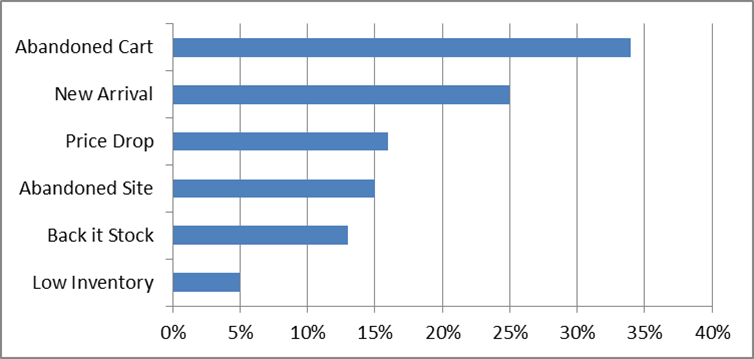How retailers use personalisation and triggered emails

At the end of 2016 the specialist publisher Retail Touch Points published the study Inbox Love - Investigating the State of Triggered Emails & Personalization for Retailers and ConsumersThe survey asked marketers and consumers about the use and value of email marketing.
We bring in this post the most relevant aspects of the work in terms of customisation and triggered emails refers.
Firstly, the study highlights the poor use that retailers are making of the information they have about their users. Specifically, it refers to the use of historical purchase data, e-commerce browsing behaviour and purchase affinities.
- 54% retailers use data to create profiles based on user activity (dormant shoppers, loyal customers, etc.).
- The 54% uses user data to personalise some element (subject, images).
- 17% does not use any data to personalise marketing emails.
The study highlights the large gap between what the end consumer expects and the efforts that retaliers are making to achieve it. For example, 53% of consumers say they would be interested if they received an email from a brand with a discounted price on a product recently visited on ecommerce.. However, Only 21% of retailers claim to be making specific efforts on the most price-sensitive users.
Only 54% of retailers claim to be sending emails to specific groups of users, and only 34% claim to be using user data to optimise opens, clicks or send times.
In relation to the different types of triggered emailsThe percentage of retailers who rated them as "very effective" is presented below.

The abandoned trolley recovery emails are the most highly rated by retailers in terms of their effectiveness.
When retailers are asked to indicate which metrics improve the most after implementing triggered email programmes, 56% indicate CTR, 50% open rate and 40% conversion and transaction metrics.
The full study is available at the following link.